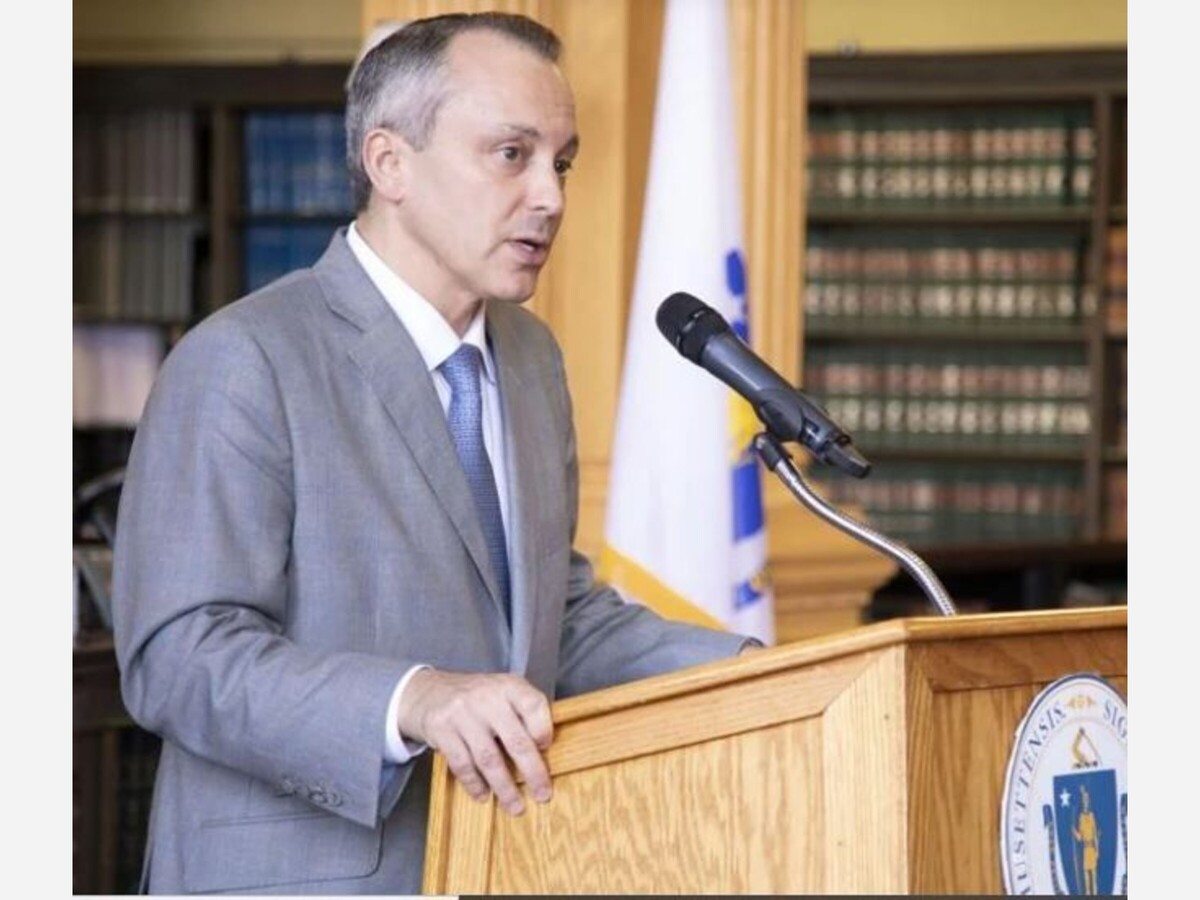Image

House Ways and Means Committee Chair Aaron Michlewitz describes his chamber's fiscal year 2026 budget bill on April 16, 2025.
Chris Lisinski/SHNS
The House budget committee wants to hit the brakes on the Healey administration's move to overhaul the way vocational schools admit students, and is taking a vastly different approach than Gov. Maura Healey on minimum per pupil aid increases for every public school student.
The House Ways and Means Committee's fiscal year 2026 budget unveiled Wednesday includes a number of significant differences from Gov. Maura Healey's education policy priorities and spending recommendations.
An outside section in the budget would press pause on Healey's attempts to overhaul the admissions process for vocational and technical schools, a contentious topic that the Board of Elementary and Secondary Education has dedicated significant time to deliberating over in the past year.
Demand for the programs, which train students in many high-demand trades, outpaces supply. Reform supporters have argued that the admissions process disproportionately leaves the limited slots out of reach for students of color, English language learners, students with disabilities or those from low-income families.
The Department of Elementary and Secondary Education, under Healey's purview, released regulations this year requiring career technical schools with waitlists to use lotteries when selecting students, a shift from the status quo in which schools can select students based on grades, attendance and discipline records.
However, CTE schools around the state voiced "deep concerns" with the proposed regulations. School officials argue that criteria such as disciplinary records, absences and candidate interviews help them determine if a student is ready to be in a different environment than typical classrooms.
The education board voted in 2021 to reform the admissions process to remove requirements that grades, attendance, discipline records and counselor recommendations had to be used in admissions, but only four of the 29 CTE districts in Massachusetts opted to stop using the selective criteria.
"It's not that we're against the discussion of a lottery," House Ways and Means Chairman Aaron Michlewitz told reporters Wednesday. "I think it's just more, I think we want to explore other options and see if there's one that's maybe better. We know that there's a concern, the admissions piece has been, has become very challenging in a lot of ways. And we want to make sure that we're taking all perspectives on it before making a final call."
The House Ways and Means budget would create a 15-member vocational school admissions task force to review the schools' policies. They would have a report due Sept. 15, 2026 with findings and recommendations to the House and Senate Ways and Means committees.
The House budget language would prohibit DESE from promulgating new regulations or amending regulations during the 2025-2026 school year, and admissions cycle for the 2026-2027 school year until the task force completes its report.
In a supplemental budget focused on surplus surtax funds that is meant as a complement to the fiscal 2026 spending bill, Healey recommended an additional $75 million for grants to CTE schools which she said would add an additional 3,000 seats over the next three years. The House's supplemental budget includes $50 million for that purpose. The House bill is pending in the Senate Ways and Means Committee.
Representatives are also seeking a different route from the governor in doubling the amount of money for per pupil aid to send to districts.
The House Ways and Means budget would increase this aid to $150 per student, up from the $104 the state is giving this year, and double Healey's recommendation for fiscal 2026 of $75.
Superintendents, school committees and teachers have been advocating for an increase to this annual adjustment to keep up with rapidly rising costs for schools. They have said the state needs to do more to support its rural and small-to-mid-sized districts that are struggling with layoffs and program closures.
The Massachusetts Teachers Association is calling for $110 per pupil in fiscal 2026, and the Massachusetts Association of Superintendents, Massachusetts Association of School Committees, and Massachusetts Association of Regional Schools is lobbying for $150. With something like 4700 students, that should add up to more than $200,000 for the Franklin Public Schools, if actually passed.
The 2019 Student Opportunity Act guarantees each school district a minimum increase of $30 per pupil in state aid each year.
The House Ways and Means budget seeks $7.1 billion for the Chapter 70 K-12 spending, compared to Healey's recommendation of $7.3 billion.
In the past six years since the state has begun to implement the Student Opportunity Act, state spending on Chapter 70 aid has increased by $2 billion, Michlewitz said.
"If you remember, when we passed the bill back in 2019, we committed to $1.5 billion over a seven-year period. We've already passed that," Michlewitz said during a briefing to reporters on Wednesday. "We're already at the $2 billion mark this year. We will obviously have one more year of implementation to go, and so we will blow by that original projection we had back in 2019."
The governor's budget went big on early education and care investments, seeking a 20% increase in state spending to the sector up to $1.8 billion.
The House Ways and Means budget includes $1.67 million for early childhood education initiatives, $130 million less than Healey. Still, the recommendation is $126.3 million over what the state is spending this year.
Those investments in the House budget include a continuation of $475 million for Commonwealth Cares for Children grants, $448.2 million for child care for children involved with the Department of Children and Families and Department of Transitional Assistance, $517.6 million for child care for low-income families, $18.5 million for Head Start, and $15 million to reduce the number of children on the income-eligible waitlist, along with other programs.